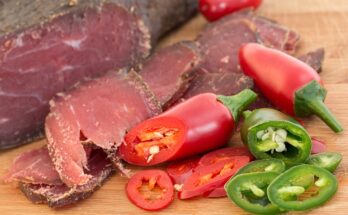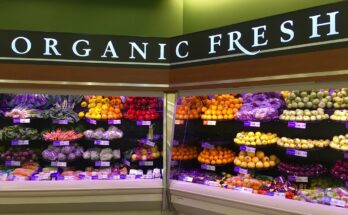Are you aware of the crucial role that temperature control plays in the food processing industry? From ensuring food safety to preserving the quality of your favorite products, maintaining the correct temperature at every step is essential. Incorrect temperature control can have detrimental effects on both food safety and quality, leading to potential health risks and decreased consumer satisfaction.
In this article, we will explore the different methods used in temperature control during food processing. Whether it’s through refrigeration, freezing, heating, or cooling, each method serves a specific purpose in maintaining optimal conditions for food production. We will also discuss the importance of maintaining temperature control throughout the entire food production chain, from farm to table.
Furthermore, we will delve into the role of temperature monitoring and regulation in food processing operations. The use of advanced technology and effective monitoring systems can help ensure that temperature control remains accurate and consistent, mitigating any risks associated with improper handling.
Join us as we uncover the vital role of temperature control in food processing and how it impacts the safety and quality of the food we consume.
Importance of Temperature Control in Food Safety
Temperature control is crucial in ensuring the safety of our food, as it plays a vital role in preventing the growth of harmful bacteria and ensuring that our meals are safe to consume. By maintaining the proper temperature during food processing, we can effectively inhibit the growth of bacteria that can cause foodborne illnesses.
When food is exposed to temperatures above 40°F (4°C), bacteria multiply rapidly, increasing the risk of contamination. On the other hand, keeping food below 40°F (4°C) or above 140°F (60°C) helps to prevent bacterial growth. This is why it’s essential to refrigerate perishable items promptly and cook foods thoroughly.
Temperature control also ensures that food is stored and transported at safe temperatures, minimizing the risk of spoilage and foodborne illness outbreaks. Therefore, it’s crucial to prioritize temperature control in food processing to guarantee the safety and quality of our meals.
The Effects of Incorrect Temperature Control on Food Quality
When you neglect to properly monitor the heat levels during food preparation, it can significantly impact the overall taste and freshness of your meals. Incorrect temperature control can lead to various negative effects on food quality.
For example, if the temperature is too high, it can cause overcooking, resulting in dry and tough textures. On the other hand, if the temperature is too low, it can lead to undercooked food, which poses a risk of foodborne illnesses.
Additionally, improper temperature control can affect the flavor of the food. For instance, certain ingredients may lose their aroma or develop off-flavors when exposed to incorrect temperatures.
Moreover, inadequate temperature control can accelerate spoilage and bacterial growth, reducing the shelf life of your food. Therefore, it’s crucial to maintain proper temperature control to ensure the quality and safety of your meals.
Different Methods of Temperature Control in Food Processing
To ensure your meals are prepared to perfection, you have various methods at your disposal for effectively managing the heat levels during the cooking process.
One common method is using ovens, which provide a controlled environment with precise temperature settings. Ovens allow you to bake, roast, and broil your food, ensuring even cooking throughout.
Another method is using stovetops, which allow for direct heat application and offer different heat settings for simmering, boiling, and frying.
Sous vide is a method that involves vacuum-sealing food and cooking it in a water bath at a precise temperature. This technique ensures consistent and evenly cooked results.
Additionally, you may use pressure cookers, which cook food faster by trapping steam and raising the internal temperature.
With these different methods, you can easily control the temperature and achieve delicious, perfectly cooked meals.
Maintaining Temperature Control Throughout the Food Production Chain
Throughout the food production chain, you’ll want to ensure that the heat levels are carefully managed to guarantee the quality and safety of your meals. From the moment the raw ingredients arrive at your facility to the final packaging stage, maintaining proper temperature control is crucial.

This involves implementing various measures such as refrigeration, freezing, and hot holding to prevent the growth of harmful bacteria and maintain the freshness of the food. Regular temperature checks should be conducted during each step of the production process to ensure that the required temperatures are being maintained.
Additionally, proper storage and transportation practices should be followed to prevent temperature fluctuations that could compromise the safety and quality of the food. By consistently monitoring and controlling the temperature throughout the food production chain, you can confidently provide your customers with safe and delicious meals.
The Role of Temperature Monitoring and Regulation in Food Processing Operations
In order to ensure the quality and safety of your meals, it’s crucial for you to carefully monitor and regulate the temperatures in your food production operations.
Temperature monitoring plays a vital role in food processing, as it helps to prevent the growth of harmful bacteria and maintain the integrity of the product. By regularly checking the temperature of your ingredients, you can ensure that they are stored at the correct temperatures to prevent spoilage and contamination.
During cooking or pasteurization, temperature regulation is essential to destroy any pathogens present in the food. Additionally, monitoring the temperature during cooling and storage is important to prevent the growth of bacteria that can cause foodborne illnesses.
By implementing effective temperature control measures, you can guarantee the safety and quality of the food you produce.
Conclusion
So there you have it, temperature control plays a crucial role in food processing. It is essential for ensuring food safety and maintaining the quality of the products. Incorrect temperature control can have detrimental effects on food quality, leading to spoilage and potential health risks.
Different methods of temperature control, along with continuous monitoring and regulation, are implemented throughout the food production chain to ensure proper handling and processing. Remember, maintaining temperature control is key to delivering safe and high-quality food to consumers.




